
9121005733 /
9121005833

Monday - Saturday
9.00 AM - 5.30 PM
Sunday [Private
OPD]
9.00 AM - 5.30 PM

Venkata Prasad, J. Satyanarayana Reddy, N. Ravi Kumar, G. Gopikrishna and K. Anand Solomon,
J. Chem. Sci. 2011, 123, 673–679.
Satyanarayana Reddy, N. Ravi Kumar, J. Venkata Prasad, G. Gopikrishna and K. Anand Solomon,
Acta Cryst. 2011, E67, o1330.
Satyanarayana Reddy, N. Ravi Kumar, J. Venkata Prasad, G. Gopikrishna and K. Anand Solomon,
Acta Cryst. 2011, E67, o1330.
Ravi Kumar, G. Gopikrishna and K. Anand Solomon,
Acta Cryst. 2011, E68, o265.
Veeraiah, G. Gopikrishna and K. Anand Solomon, J. Satyanarayana Reddy, V. Veeraiah, K. Chaitanya,
J. Chem. Sci. 2011, 123, 673–679.
Journal of Molecular Structure, 2012, Volume 1026, Pages 36-43.
Aravind, K. Anand Solomon and S.S. Rajan,
Int J Pharm Bio Sci, 2012, Volume 3, Pages 193 – 203.
Ravi Kumar, J. Satyanarayana Reddy, G. Gopikrishna and K. Anand Solomon,
Int J Pharm Bio Sci, 2012, Volume 3, Pages 344 – 350.
Ravi Kumar, J. Satyanarayana Reddy, J. Venkata Prasad, K. Anand Solomon and G. Gopikrishna,
Journal of Chemistry. 2013, Article ID 593803, 8pages.
Venkata Prasad, J. Satyanarayana Reddy, G. Sravan Kumar, K. Anand Solomon and G. Gopikrishna,
Tetrahedron. Lett. 2013, Volume 54, Pages 1491-1494.
Giri Babu, K. Anand Solomon and K. Eswar Kumar,
Systems Biology in Reproductive Medicine, 2013, Volume 59, Pages 319-328
Ravi Kumar, G. Gopikrishna and K. Anand Solomon
Journal of Molecular Structure, 2013, Volume 1033, Pages 272-279.
Satyanarayana Reddy, K. Anand Solomon, G. Gayatri, M. Shukla, K. Dorai, G. Gopikrishna
Tetrahedron, 2013, Volume 69, Pages 2142-2149.
Satyanarayana Reddy, N. Ravi Kumar, G. Gopikrishna, K.N. Naresh, S.S. Rajan and K. Anand Solomon,
Journal of Molecular Structure, 2013, Volume 1039, Pages 137-143.
Sai Madhukar, K. Anand Solomon, Viswanath Das, K. Anil Kumar and S. Krupanidhi,
Current Trends in Biotechnology and Pharmacy, 2013, Volume 7, Pages 558-566.
Venkata Prasad, N. Rave Kumar, K. Anand Solomon, K. R. S. Sudar Nilaventhan, Rene Christene Lourence, N. Saisubramanian and G. Gopikrishna,
Indian Journal of Chemistry B. 53B, 345-351, 2014
Satyanarayana Reddy, J. Venkata Prasad, G. Sravan Kumar, K. Anand Solomon and G. Gopikrishna,
J. Chem. Sci. 2014, 126, 187-195.
Satyanarayana Reddy, K. Anand Solomon, N. Jagadeesh Babu, J. Venkata Prasad, G. Sravan Kumar, and G. Gopikrishna,
Tetrahedron. Lett. 2014, 55, 3670-3673.
Aravind, K. Anand Solomon and S.S. Rajan,
Medicinal Chemistry Research, 2014, Volume 23, Pages 1789-1796.
Satyanarayana Reddy, B.N. Vedhahari, K. Anand Soloman,
Journal of Biopharmaceutics Sciences, Volume 2, Year 2014, Pages 7-14.
DOI : http://www.arpub.org/index.php/jbs/article/view/116
Krishnamurthy, J. Venkata Prasad, T. C. Vagvala, T. Moriguchi and A. Tsuge,
Acta Cryst. 2015, E71, o447.
Moriguchi, J. Venkata Prasad, S. Krishnamurthy and A. Tsuge,
Acta Cryst. 2015, E71, o1003-o1004.
Moriguchi, J. Venkata Prasad, S. Krishnamurthy and A. Tsuge,
Acta Cryst. 2015, E71, o1002.
Moriguchi, R. Kamoto, J. Venkata Prasad and A. Tsuge,
Moriguchi, R. Kamoto, J. Venkata Prasad and A. Tsuge,
Moriguchi, D. Miyamoto, J. Venkata Prasad, K. Yoza and A. Tsuge,
Moriguchi, J. Venkata Prasad, S. Krishnamurthy, A. Tsuge and K. Yoza
Acta Cryst. 2015, E71, o1049-o1050.
Moriguchi, D. Yakeya, J. Venkata Prasad and A. Tsuge,
Designation: Director – CQI & Research
Department: Glaucoma
Dr. Raveendra completed his MBBS, MS in ophthalmology, FAICO and FIGO.
Designation: Head of Department
Department: Vitreo & Retinal Services
Dr. Krishna completed his MBBS from ( ), Diploma in Ophthalmology and fellowship from SFEH.
Diabetic retinopathy is a complication of diabetes, caused by high blood sugar levels damaging the back of the eye (retina). It can cause blindness if left undiagnosed and untreated.
Symptoms
There are no apparent symptoms in the early stages until it is advanced. If you are diabetes for log time and experience any of the below symptoms, an eye examination is required. These symptoms do not necessarily mean you have diabetic retinopathy, but it’s important to get them checked out.

Normal Vision Vision effected by diabetic retinopathy
Common Treatment for DR

Retinitis Pigmentosa (RP) is a group of rare diseases affecting the retina and leading to vision loss over time. Early symptoms include decreased night vision. It is a rare genetic disorder that effects the retina.
Symptoms:
RP is a progressive condition, which means it generally gets worse over time. Symptoms typically appear during childhood. As RP advances, a person may notice new or worsening symptoms that affect their vision.
When to See an Eye Doctor:
A person should seek advise from an eye doctor, if they notice a slow loss of night or peripheral vision. These can be signs of RP onset. They should also contact a doctor if they experience a sudden loss of sight, as this could be a sign of other conditions.
A macular hole is a rare eye condition. The condition can blur the central vision we use to do daily tasks like driving or reading.
The macula is a small area in the center of the retina. Macular holes happen when an opening forms in the macula — usually after being stretched or pulled. Most macular holes form because of changes in the eye that happen as we age.
Symptoms:
The symptoms of this condition start slowly.
At first, you might notice that things look distorted or blurry when you look straight ahead. Lines or straight objects — like a window frame — might look bent, wavy, or like they’re missing a piece in the center. It might be harder to do everyday tasks like reading, writing, or driving.
Over time, you might notice a blurred or blind spot in your central vision. When reading, you may see the lines but miss letters or words in the center. Or you may be able to see a person’s face but not their nose or eyes.
Early treatment with surgery can often restore vision. Without early treatment, central vision loss may be permanent.
When to see a doctor:
If you have blurred or distorted vision, or there’s a black spot in the centre of your vision, see an eye doctor.
A Rigid Gas-Permeable lens, also known as RGP lens or GP lens is popularly known as Hard Contact Lens. It is the most common type. They hold their shape firmly, yet they let oxygen flow through the lens to your eye.
RGP lenses are smaller than soft lenses, fitting within the cornea rather than overlapping onto the white of the eye. This allows the tears to flow freely under the lens and this combined with the oxygen permeability of the lens material means that RGP lenses are healthy for your eyes.
Because RGP lenses are rigid, they correct for any imperfections in the shape of the cornea such as astigmatism, and in many cases give a superior standard of vision to soft lenses. They also last for many months and are rather more robust than soft lenses.
RGP lenses are especially helpful for people with astigmatism and a condition called keratoconus. This is because they provide sharper vision than soft lenses when the cornea is unevenly curved. People who have allergies or tend to get protein deposits on their contacts may also prefer RGP lenses.
Soft lenses are handily the foremost popular sort of contact. Most of those are silicone hydrogel lenses, which transmit more oxygen to the surface of the attention than conventional hydrogel lenses. Soft contact lenses are made from a thin and porous plastic containing hydrogels. Not like hard contacts, hydrogels in soft contacts are supple. This enables superior breathability and comfortability.
If you wear glasses frequently, and your eyes are healthy, you’re probably a good candidate for contact lenses. You may want contacts instead of eyeglasses for aesthetic reasons, or because you play sports or engage in other activities that make glasses impractical.
Astigmatism can be corrected with contacts now and give you better peripheral vision.
 Sri. Kannan Rammiratham is a Postgraduate in Mathematics (Madras University) and PG in Management Studies (Bombay University), CAIIB and CAIF from Indian Institute of Bankers.He has over 35 years of experience in corporate and investment banking through senior director level positions in a large Indian national bank, country head in Standard Chartered Investment Bank and as Promoter & Managing Director of a registered category one investment bank, all in India. Served on the high-power committees in securities industry, set up by Government.
Sri. Kannan Rammiratham is a Postgraduate in Mathematics (Madras University) and PG in Management Studies (Bombay University), CAIIB and CAIF from Indian Institute of Bankers.He has over 35 years of experience in corporate and investment banking through senior director level positions in a large Indian national bank, country head in Standard Chartered Investment Bank and as Promoter & Managing Director of a registered category one investment bank, all in India. Served on the high-power committees in securities industry, set up by Government.
Sri. Rammiratham has been involved in lead positions for equity fundraising and valuations in over 300 assignments during his career, including mergers & acquisitions, corporate / capital structuring, project finance. He has been actively practicing as Board Level Advisory, Performance Enhancement initiatives, Investor representation, to guide promoter-directors, holding companies and international investors.
Sri. Rammiratham has been active as member in the Board of Directors for many corporate companies. Presently representing as Trustee in Vedanta Foundation, Bhadra Janhit Trust, Sankar Foundation.

Sri. Kumar Atmakuri Ram is MBA Post-Graduate from Wharton School, University of Pennsylvania. Currently working as FINRA Arbitrator, Lives in New York, USA. Former Executive Director, JP Morgan Chase, Investment Bank, New York.
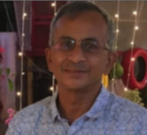 Sri. Atmakuri Vijay Kumar is the Managing Director for A S Raja Sons Enterprises Pvt Ltd. Visakhapatnam. An MBA, Post Graduate from University of Texas at Arlington, he worked with Burroughs Corporation, Cyberneties Incorporated, to help banks convert to disk based computer systems. Imported handmade woolen carpets from Mirzapur India and wholesaled them to stores in Texas. Currently, he is the Managing Director of A.S. Raja Sons Enterprises Pvt. Ltd. & Vijay Ram Enterprises running a fabrication workshop which designs, builds and erects pre engineered factory sheds..
Sri. Atmakuri Vijay Kumar is the Managing Director for A S Raja Sons Enterprises Pvt Ltd. Visakhapatnam. An MBA, Post Graduate from University of Texas at Arlington, he worked with Burroughs Corporation, Cyberneties Incorporated, to help banks convert to disk based computer systems. Imported handmade woolen carpets from Mirzapur India and wholesaled them to stores in Texas. Currently, he is the Managing Director of A.S. Raja Sons Enterprises Pvt. Ltd. & Vijay Ram Enterprises running a fabrication workshop which designs, builds and erects pre engineered factory sheds..
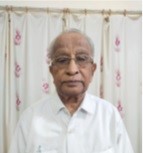
Sri. Ayyagari Prasanna Kumar is a renowned former Professor of Andhra University who has guided successfully 25 Research scholars for Ph.D., and 15 M.Phil scholars. Founder-Editor Research Notes, Andhra University Research Bulletin Founder-Editor Bulletin of the Centre for Policy Studies (1995 till date). Sri Kumar is a visiting Professor at Georgia Atlantic University, USA. In the summer of 1994, he delivered Endowments lectures at Utkal University, Bhubaneswar, Madras University, Annamalai University, Rt Hon’ble V.S.Srinivasa Sastry Memrorial Lecture, Chennai and a few other places.
He has been AIR’s tennis and cricket broadcaster from 1964 to 2003 with over 15 Davis Cup and Challenger tennis tournaments and on several national and international cricket and badminton matches including ASIAD 82 at Delhi. Authored books on cricket and tennis with foreword by Ramanathan Krishnan and Gundappa Viswanath respectively.
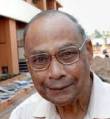 (Late) Sri. Rao was a businessman turned into a philanthropist. Started his life as salesman in 1947, his first big step was setting up Vizag Timber Yard after which he branched out into financing heavy vehicles. He undertook construction of Dry dock for the Indian Navy and stock yard for the outer harbour in Visakhapatnam Port. He took up major works in MES, DGNP and was recipient of Best contractor from Ministry of Defence, Government of India in 1983. He also executed work in the Steel Plant , NALCO, Damanjodi. Having built Grand Bay Hotels in 1994, he sold it away and contributed 2.67 crore to Sankar Foundation.
(Late) Sri. Rao was a businessman turned into a philanthropist. Started his life as salesman in 1947, his first big step was setting up Vizag Timber Yard after which he branched out into financing heavy vehicles. He undertook construction of Dry dock for the Indian Navy and stock yard for the outer harbour in Visakhapatnam Port. He took up major works in MES, DGNP and was recipient of Best contractor from Ministry of Defence, Government of India in 1983. He also executed work in the Steel Plant , NALCO, Damanjodi. Having built Grand Bay Hotels in 1994, he sold it away and contributed 2.67 crore to Sankar Foundation.
Sri Rao received several awards for his selfless service : among which the most outstanding service award was from Rotary Club, Waltair, Master MN Award from World Teacher Trust, Madras Telugu Academy Ugadi Puraskaram, Best Surgical NGO Award for Sankar Foundation from Srikakulam.
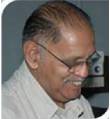 ( Late) Sri. Subbarao was a legal luminary, former Mayor of Visakhapatnam and President, Andhra Cricket Association. He created a record of being elected twice as Chairman of the Bar Council of India
( Late) Sri. Subbarao was a legal luminary, former Mayor of Visakhapatnam and President, Andhra Cricket Association. He created a record of being elected twice as Chairman of the Bar Council of India
As Mayor of Visakhapatnam city, he was instrumental in improving the beauty of the city and developing greenery which received appreciation from several quarters
An active cricketer in his younger days, Sri Subbarao was elected president of Andhra Cricket Association several times, and accompanied the Sachin Tendulkar-led Indian team to the West Indies in 1997 as its administrative manager. He was president of Vishakatnam District Cricket Association for many years.
Sri Subbarao played a major role in Visakhapatnam hosting its first One Day International cricket tournament at the Municipal Corporation stadium when he was the city’s Mayor and later in the construction of the ultra-modern ACA-VDCA stadium in the city outskirts.

Elder Son of Founder Late Sri. Atmakuri Sankar Rao. He has completed his post-graduation in M.A Applied Economics from Andhra University. Experienced for 30 years in handling various civil contracts in Family Business under Uma Constructions & Ravi Constructions and successfully completed projects in Visakhapatnam Odisha and Madhya Pradesh. In 1996 appointed as Business Associate in Tata Tele Services and Tata cellular covering East Godavari, West Godavari, Visakhapatnam, Vizianagaram and Srikakulam and conducted business till 2014. Thereafter involved in earth moving business in Madhya Pradesh, Chattisgarh.
Smt. Atmakuri Yesodha is wife of (Late) Sri. Atmakuri Sankar Rao and the co-founder of Sankar Foundation.
 Smt. K. Mani Mala is a postgraduate holding an MBA. She started her career as a founder faculty of one of the first management colleges in Visakhapatnam, viz. Indian Institute of Advanced Management. She worked with East India Petroleum Limited as its first employee and as Executive Assistant to the Managing Director. She was also associated in establishing the Joint Venture with M/s SHV Energy of Netherlands as General Manager (MIS). During her tenure she was also associated with other group companies such as 16 MW & 450 MW gas-based power projects in AP and 16 MW & 100 MW hydel power plants in Himachal Pradesh.
Smt. K. Mani Mala is a postgraduate holding an MBA. She started her career as a founder faculty of one of the first management colleges in Visakhapatnam, viz. Indian Institute of Advanced Management. She worked with East India Petroleum Limited as its first employee and as Executive Assistant to the Managing Director. She was also associated in establishing the Joint Venture with M/s SHV Energy of Netherlands as General Manager (MIS). During her tenure she was also associated with other group companies such as 16 MW & 450 MW gas-based power projects in AP and 16 MW & 100 MW hydel power plants in Himachal Pradesh.
In 2003 Smt Mani Mala joined Sankar Foundation, as the CEO. She took active role in raising donations including alienation of land, construction, and commissioning of state -of -the -art 350 bedded eye hospital. Responsible for partnerships with INGOs to put Sankar Foundation on the global platform. In 2009, she joined as Vice President (FIN & MIS) of Teesta Urja Pvt ltd., a 1200 MW Hydro power project based at New Delhi.
In 2012, Smt. Mani Mala joined as Director Finance, Navayuga Infotech Pvt Ltd., and In charge of Restructured Accelerated Power development and Reforms Programme (R-APDRP) in state of Tamil Nadu. Re-Joined and currently working as Managing Trustee & Group CEO at Sankar Foundation since 2011.

A renowned Law Practitioner for the past 40 years, Sri Ramdas has been handling all types of civil cases including arbitration cases, cases relating to contracts, shipping for many years. He is on the panel advocate for important Corporates including Steel Authority of India Limited, Shipping Corporation of India Limited, Dredging Corporation of India limited, Hindustan Shipyard, Visakha Container Terminal Private Limited at Visakhapatnam port, besides several other clients.
Wife of (late) Sri. Atmakuri Sankar Rao and co-founder of Sankar Foundation.
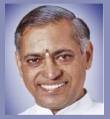 ( Late) Dr. Kumar studied Law and Economics at the Andhra University, Visakhapatnam and Chennai. He was a Chartered Accountant of repute with offices in Visakhapatnam, Hyderabad and Chennai.
( Late) Dr. Kumar studied Law and Economics at the Andhra University, Visakhapatnam and Chennai. He was a Chartered Accountant of repute with offices in Visakhapatnam, Hyderabad and Chennai.
He had a deep knowledge of the symbolism of the World Scriptures and excellent knowledge of astrology and homeopathy.
He has authored more than 135 titles on a wide range of topics including meditation, yoga, philosophy, ancient wisdom, symbolism, colour, sound, mantrams, astrology, education, health, and healing.
Dr. Kumar was also International Chairman of The World Teacher Trust – a socio-spiritual organization that imparts a spiritual basis for social, economic, and domestic living with activities in 27 countries.
He started his Charted Accounting practice in 1970 with the firm Rao & Kumar. He was the Founder Secretary of Visakhapatnam chapter of the Institute of Chartered Accountants of India and also was the third Chairman of this chapter.
Dr. Kumar played a major role in the development of our this Institute as Chairman for many years and remained as its mentor since 2010.
Secondary glaucoma may be caused by an eye injury, inflammation, certain drugs such as steroids and advanced cases of cataract or diabetes. The type of treatment will depend on the underlying cause, but usually includes medications, laser surgery, or conventional surgery.
Acute angle-closure glaucoma is a medical emergency. Angle-closure glaucoma may occur suddenly (acute angle-closure glaucoma) or gradually (chronic angle-closure glaucoma).
This occurs when the iris bulges forward to narrow or block the drainage angle formed by the cornea and iris. As a result, fluid can’t circulate through the eye and pressure increases. Some people have narrow drainage angles, putting them at increased risk of angle-closure glaucoma.
Symptoms, including eye pain and headaches, can be severe and require immediate medical attention.
It is the most common type of glaucoma, where many who have it, are unaware of it.
In open-angle glaucoma, the angle in your eye where the iris meets the cornea is as wide and open as it should be, but the eye’s drainage canals become clogged over time. This causes an increase in internal eye pressure and subsequent damage to the optic nerve.
The disease can go unnoticed for years because most people don’t have symptoms.
This type of cataract begins as a small opaque or cloudy area on the “posterior,” or back surface of the lens. It is called “subcapsular” because it forms beneath the lens capsule, which is a small “sac,” or membrane, that encloses the lens and holds it in place.
Subcapsular cataracts can interfere with reading and create “halo” effects and glare around lights.
People who use steroids, or have diabetes, extreme nearsightedness, and/or retinitis pigmentosa may
develop this type of cataract. Subcapsular cataracts can develop rapidly and symptoms can become
noticeable within months.
“Cortical” refers to white opacities, or cloudy areas, that develop in the lens cortex, which is the
peripheral (outside) edge of the lens. Changes in the water content of the lens fibers create clefts, or
fissures, that look like the spokes of a wheel pointing from the outside edge of the lens in toward the
center.
These fissures can cause the light that enters the eye to scatter, creating problems with blurred vision, glare, contrast, and depth perception.
This is the most common type of age-related cataract, caused primarily by the hardening and yellowing of the lens over time. “Nuclear” refers to the gradual clouding of the central portion of the lens, called the nucleus; “sclerotic” refers to the hardening, or sclerosis, of the lens nucleus.
As this type of cataract progresses, it changes the eye’s ability to focus, and close-up vision (for reading or other types of close work) may temporarily improve. This symptom is referred to as “second sight,” but the vision improvement it produces is not permanent. A nuclear sclerotic cataract progresses slowly and may require many years of gradual development before it begins to affect vision.
Retinopathy of prematurity (ROP for short) is an eye problem seen in some premature babies.
Retinopathy of prematurity (ROP) is an eye disease that can happen in babies born 1250 grams or less and who are born before 31 weeks gestation. These babies are at highest risk.
In babies with ROP the blood vessels in the retina have developed abnormally after birth. Most premature babies do not develop any ROP. In babies that do develop ROP, it is usually mild and goes away by itself, without causing any problems with vision.
Babies born at a very early gestation can develop ROP where blood vessels grow abnormally and uncontrollably causing damage to the light sensitive layer of the retina.
In the worst case scenario this can lead to bleeding and scarring that can pull the retina away from the wall of the eye (retinal detachment) putting the baby at risk of becoming blind.
How to know of your baby is at risk
We cannot predict which babies will develop ROP. All babies weighing less than 1250 grams at birth will have regular eye examinations after their gestational age reaches 30 to 31 weeks. Eye drops are used to dilate the pupils. The examination only takes a couple of minutes. Your baby may be minimally upset by these examinations and will settle very quickly once the eyes have been checked.
What are the symptoms of retinopathy of prematurity?
Retinopathy of prematurity has no signs or symptoms. The only way to find it is through an eye exam by an eye doctor.
AMD is a common condition. It is a leading cause of vision loss for older adults. This eye ailment can blur central vision. It happens when aging causes damage to the macula — the part of the eye that controls sharp, straight-ahead vision. The macula is part of the retina (the light-sensitive tissue at the back of the eye). The condition makes it difficult to see faces, read, drive or attend to work which requires close up vision.
Symptoms
Largely people with age-related macular degeneration do not have any obvious symptoms until the disease progresses. People with the eye problem may experience:
Types of AMD
There are two types
Dry (atrophic):
Up to 90% of people with macular degeneration have the dry form. Vision loss with the dry form tends to occur gradually. Most people don’t completely lose central vision.
Wet (exudative):
This condition occurs when abnormal blood vessels develop under the retina and macula. This type is more severe. It can quickly lead to total loss of central vision.
Risk Factors
Retinal detachment is an emergency situation in which a thin layer of tissue (the retina) at the back of the eye pulls away from its normal position.
There are many causes of retinal detachment, but the most common causes are aging or an eye injury.
Symptoms:
When to see a doctor
This is an emergency situation. And one should seek immediate medical attention if you are experiencing the signs or symptoms of retinal detachment.
What are the warning signs of a detached retina?
The sudden appearance of many floaters — tiny specks that seem to drift through your field of vision. Flashes of light in one or both eyes (photopsia) Blurred vision. Gradually reduced side (peripheral) vision.

Some people are born with cataracts or develop them during childhood. These cataracts may be genetic, or associated with an intrauterine infection or trauma. These cataracts may also be due to certain conditions, such as myotonic dystrophy, galactosemia, neurofibromatosis type 2 or rubella. Congenital cataracts don’t always affect vision, but if they do, they’re usually removed soon after detection
This type of cataract begins as a small opaque or cloudy area on the “posterior,” or back surface of the lens. It is called “subcapsular” because it forms beneath the lens capsule, which is a small “sac,” or membrane, that encloses the lens and holds it in place.
Subcapsular cataracts can interfere with reading and create “halo” effects and glare around lights. People who use steroids, or have diabetes, extreme nearsightedness, and/or retinitis pigmentosa may develop this type of cataract. Subcapsular cataracts can develop rapidly and symptoms can become noticeable within months.
“Cortical” refers to white opacities, or cloudy areas, that develop in the lens cortex, which is the peripheral (outside) edge of the lens. Changes in the water content of the lens fibers create clefts, or fissures, that look like the spokes of a wheel pointing from the outside edge of the lens in toward the center.
These fissures can cause the light that enters the eye to scatter, creating problems with blurred vision, glare, contrast, and depth perception.
This is the most common type of age-related cataract, caused primarily by the hardening and yellowing of the lens over time. “Nuclear” refers to the gradual clouding of the central portion of the lens, called the nucleus; “sclerotic” refers to the hardening, or sclerosis, of the lens nucleus.
As this type of cataract progresses, it changes the eye’s ability to focus, and close-up vision (for reading or other types of close work) may temporarily improve. This symptom is referred to as “second sight,” but the vision improvement it produces is not permanent. A nuclear sclerotic cataract progresses slowly and may require many years of gradual development before it begins to affect vision.
Designation: Director – Medical Administration & Training
Specialisation: General Ophthalmologist & Cornea
Dr. Nasrin completed her MBBS and DO in ophthalmology from Dr. NTR University of Health Sciences, Vijayawada, Andhra Pradesh. She did her fellowship from SFEH.
Designation: Senior Consultant
Department: Paediatric Ophthalmology
Dr. Suparna completed his MBBS from Acharya Nagarjuna University, Guntur, Andhra Pradesh,
PG. Diploma in ophthalmology ( from where) and fellowship from Arvind Eye Hospital, Madurai.
Designation: Consultant
Department: Cornea
Dr. Rashmirath completed his/ her?? MBBS from Berhampur University, Odisha, MS in ophthalmology from Utkal University, Odisha and fellowship from SFEH.
Department: Anterior Segment
Dr. Vamaravalli completed MBBS and MS from NTR University.
Department: Anterior Segment
Dr. Bonda completed MBBS from MBBS from Krishna Institute of Medical Sciences, Karad, Maharashtra and MS from Utkal University, Odisha.
Department: Retina
Dr. Theja completed MBBS from Siddhartha Medical college, Vijayawada, and MS from Dr. NTR University of Health Sciences.
Department: Cornea
Dr. Raksha completed MBBS from Rajiv Gandhi University of Health Sciences, Karnataka and MS- from Rajiv Gandhi University of Health Sciences.
Department: Retina
Dr. Teja completed MBBS from Dr. NTR University of Health Sciences, Vijayawada and MS from Amrita School of Medicine, Elamkara, Kochi.
Department: Cornea
Dr. Lisbo completed MBBS from RCSM Govt. Medical College, Kolhapur, University- MUHS Nashik.
DNB – Lions Nab Eye Hospital
Dr. Rupesh comleted MBBS from Gujrat University.
Dr. Rao completed MBBS and DO from Dr. NTR University of Health Sciences.
Dr. Sowmya completed her MBBS from Konaseema Institute of Medical Sciences & Research Foundation Amalapuram. University – DR NTR University of Health Sciences.
Designation: Junior Consultant
Department: General Ophthalmology
Dr. Manjuvalli completed her MBBS and MS from Dr. NTR University of Health Sciences, Kuppam. She has fellowship in anterior segment
Designation: Junior Consultant
Department: General Ophthalmology
Dr. Rani completed her MBBS from Pondicherry University and Diploma in Ophthalmology and DNB
Designation: Consultant
Department: General Ophthalmology & Cornea
Dr. Rama completed her MBBS from PES Institute of Medical Sciences & Research, Kuppam, M.S from Dr. NTR University of Health & Sciences, Vijayawada, Andhra Pradesh.
Designation: Consultant
Department: General Ophthalmology
Dr. Paidi completed her MBBS, Guntur Medical College, NTR University of Health Sciences, DNB- Sri Sankaradeva Nethralaya, Chennai.
Designation: Consultant
Department: Cornea & General Ophthalmology
Dr. Kalyani completed her MBBS and MS from Dr. NTR University of Health Sciences, Vijayawada, Andhra Pradesh and fellowship from Arvind Eye Hospitals, Madurai.
Designation: Consultant
Department: General Ophthalmology
Dr. Rao completed his MBBS from Dr. PSI of Medical Sciences & RF., Chinaavutapalli, Dr. NTR University, Vijayawada, Andhra Pradesh and MS from Dr. NTR University.
Designation: Consultant
Department: Pediatric & General Ophthalmology
Dr. Mohan completed his MBBS from Sri Devaraj Urs Academy of Higher Education & Research, Deemed University, Kolar, Karnataka, MS from Jawaharlal Institute of Postgraduate Medical Education & Research, Pondycherry and fellowship from Arvind Eye Hospitals, Madurai.
Designation: Consultant
Department: Vitreo & Retinal Services
Dr. Prasanna completed his MBBS from Maharajah’s Institute of Medical Sciences, Dr. NTR University of Health Sciences, Vijayawada, Andhra Pradesh and MS from Rangaraya Med College, Dr. NTR University, Andhra Pradesh.
Designation: Senior Consultant
Department: Vitreo & Retinal Services
Dr. Challa completed his MBBS from Andhra University, Visakhapatnam, Andhra Pradesh, MD from All India Institute of Medical Sciences, New Delhi, FIVRS
Designation: Consultant
Department: Vitreo & Retianal Services
Dr. Mahajan completed her MBBS from University of Jammu, MS from University of Mysore and FIVRS from PBMA’s H.V. Desai Eye Hospital, Pune.
Designation: Consultant
Department: Cornea
Dr. Peri completed her MBBS from Maharashtra University of Health Sciences, DNB and fellowship in cornea and microsurgery from Arvind Eye Hospital, Madurai.
Designation: Consultant
Department: Glaucoma
Dr. Shanmugavelu completed her MBBS from Bharathidasan University, Tiruchirappalli, Tamil Nadu, Diplomate N.B. (ophthalmology)NBE, New Delhi and fellowship in glaucomafrom SFEH.
Designation: Consultant
Department: Pathology
Dr. Reddi completed his MBBS from Andhra University, Visakhapatnam, Andhra Pradesh and Diploma in Clinical Pathology ( from where)
Designation: Professor
Department: Medical Education
Dr. Prasad completed his MBBS and MS from Andhra University, Visakhapatnam, Andhra Pradesh.
Designation: Sr. Medical Officer
Department: General Ophthalmology
Dr Rao completed his MBBS and DO from Dr. NTR University of Health Sciences, Vijayawada, Andhra Pradesh.
Designation: Sr. Medical Officer & Consultant
Department: Orbit & Occuloplasty
Dr. Sirisha completed his MBBS from Dr. NTR University of Health Sciences, Vijayawada, Andhra Pradesh and DO in ophthalmology from PBMA’s H .V. Desai Eye Hospital, Pune.
Designation: Director, Vitreo Retinal Services
Department: Vitreo & Retianal Services
Dr. Sharma completed his MBBS from Angarjuna University, Guntur, Andhra Pradesh and MS in Ophthalmology from Dr. NTR University of Health Sciences, Vijayawada, Andhra Pradesh. His fellowshipship in Vitreo Retina is from Arvind Eye Hospital, Madurai.
Designation: Medical Superintendent
Department: Medical Services
D. Rao completed his MBBS from Andhra University